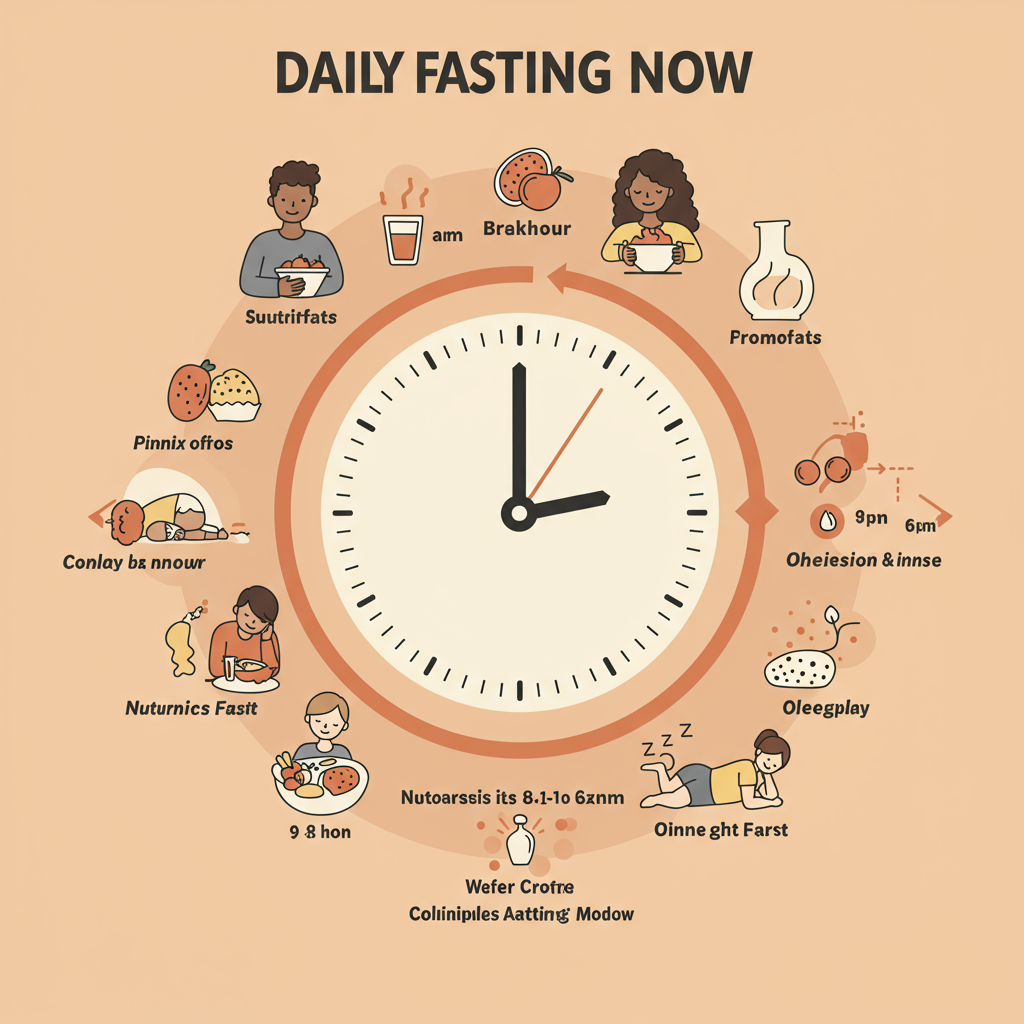Povrat metaboličkog zdravlja: Praktične strategije za suzbijanje dijabetesa u suvremenom svijetu
U svijetu brze hrane, sjedilačkog načina života i kroničnog stresa, naše metaboličko zdravlje suočava se s neviđenim izazovima. Stope dijabetesa tipa 2 i dalje rastu diljem svijeta, ali to nije jednostavno naša genetska sudbina—uglavnom je rezultat suvremenih životnih navika koje su u sukobu s našom biologijom. Dobra vijest? Imamo više kontrole nego što mislimo. Istražimo strategije temeljene na dokazima kako bismo se suprotstavili ovim suvremenim utjecajima i povratili metaboličko zdravlje.
Razumijevanje suvremene metabolicke krize

Naša tijela su se evolucijski prilagodila okruženjima u kojima je hrane ponekad bilo malo, a tjelesna aktivnost je bila nužna za preživljavanje. Danas se suočavamo s dramatičnim neskladom: stalna dostupnost visokokalorične, izrazito procesuirane hrane kombinirana s minimalnim kretanjem. Taj nesklad stvara savršenu oluju za inzulinsku rezistenciju—glavni pokretač dijabetesa tipa 2.
Kada kroz dan konzumiramo rafinirane ugljikohidrate i šećere, naša gušterača mora stalno izlučivati inzulin kako bi regulirala šećer u krvi. Tijekom vremena, naše stanice postaju manje osjetljive na signale inzulina—postaju otporne. Gušterača kompenzira proizvodeći još više inzulina, stvarajući začarani krug koji na kraju vodi do kronično povišenih razina glukoze u krvi i, u konačnici, dijabetesa tipa 2.
Ovaj proces dodatno ubrzavaju čimbenici specifični za suvremeni život: poremećeni obrasci spavanja zbog umjetnog svjetla, kronični stres zbog neprekidne povezanosti, okolišni toksini, kao i sve više sjedilačko ponašanje. Svaki od tih faktora neovisno pridonosi inzulinskoj rezistenciji, a zajedno stvaraju snažnu silu protiv metabolickog zdravlja.
Vremenski ograničeno jedenje: usklađivanje s prirodnim ritmovima
Jedna od najmoćnijih intervencija za metabolicko zdravlje ne uključuje promjenu onoga što jedete, već kada jedete. Vremenski ograničeno jedenje (TRE)—konzumacija hrane unutar 8-10 sati dnevno—radi usklađeno s prirodnim cirkadijalnim ritmovima vašeg tijela kako bi se optimizirala metabolička funkcija.
Istraživanja pokazuju da i bez ograničenja kalorijskog unosa, samo ograničavanje jedenja na kraći dnevni period može značajno poboljšati osjetljivost na inzulin, smanjiti upalu i podržati zdravu regulaciju glukoze u krvi. Ovaj pristup djeluje jer naš metabolički sustav funkcionira po cirkadijalnom satu, pri čemu je osjetljivost na inzulin prirodno veća ranije tijekom dana, a smanjuje se prema večeri.
Kako biste učinkovito uveli TRE:
- Počnite postepeno s ograničenjem unosa hrane na 12 sati, zatim postupno suzite na 8-10 sati
- Konzumirajte većinu kalorija ranije tijekom dana kada je osjetljivost na inzulin najviša
- Izbjegavajte jesti najmanje 2-3 sata prije spavanja kako biste poboljšali kvalitetu sna i metabolički oporavak
- Tijekom perioda posta ostanite hidrirani s vodom, crnom kavom ili nezaslađenim čajem
Vremenski ograničeno jedenje posebno je moćno jer omogućuje redovita razdoblja niske razine inzulina, omogućujući stanicama da povrate osjetljivost na inzulin i tijelu pristup pohranjenim masnoćama za energiju.

Kretanje kao lijek: suzbijanje sjedilačkog načina života
Naša tijela su stvorena za redovito kretanje, a ne za dugotrajno sjedenje koje dominira suvremenim životom. Tjelesna aktivnost snažno povećava osjetljivost na inzulin, s višestrukim mehanizmima koji poboljšavaju regulaciju glukoze neovisno o mršavljenju.
Dvije različite strategije kretanja nude komplementarne prednosti:
1. Strukturirana tjelovježba: I trening snage i kardiovaskularna tjelovježba poboljšavaju osjetljivost na inzulin putem različitih puteva. Trening snage gradi mišićno tkivo, koje služi kao rezervoar glukoze i poboljšava ukupno metaboličko zdravlje. Istovremeno, kardiovaskularni trening poboljšava funkciju mitohondrija i srčani kapacitet, čime poboljšava opskrbu tkiva hranjivim tvarima.
2. Aktivnost izvan vježbanja: Možda čak važnije od strukturiranog treninga je suzbijanje sjedilačkog ponašanja tijekom dana. Pauze za kretanje svakih 30 minuta, hodajući sastanci, korištenje povišenih stolova i akumulacija svakodnevne aktivnosti izvan vježbanja donose značajne metaboličke koristi koje se ne mogu postići isključivo vježbanjem.
Za optimalne rezultate, ciljte na:
- 2-3 treninga snage tjedno, fokus na glavne mišićne skupine
- 150+ minuta umjerene kardiovaskularne aktivnosti tjedno
- Razbijanje vremena sjedenja s kraćim pauzama za kretanje od 2-5 minuta svakih 30-60 minuta
- Hodanje nakon obroka kako biste ublažili skokove glukoze nakon jela

Upravljanje stresom i spavanje: zanemareni regulatori metabolizma
Iako se prehrani i tjelovježbi pridaje najviše pažnje u raspravama o metaboličkom zdravlju, upravljanje snom i stresom može biti jednako važno. Kronični stres povećava razinu kortizola, koji izravno povisuje šećer u krvi i potiče nakupljanje visceralne masnoće—posebno oko trbuha, gdje čini najviše metaboličke štete.
Slično tome, nedostatak sna ili loša kvaliteta sna izravno narušava osjetljivost na inzulin. Samo jedna noć ograničenog sna može smanjiti inzulinsku osjetljivost za 20-25%, što je usporedivo s učincima mjeseci sjedilačkog načina života.
Za podršku metaboličkom zdravlju putem ovih često zanemarenih faktora:
- Dajte prednost 7-9 sati kvalitetnog sna u hladnoj, tamnoj i tihoj sobi
- Održavajte dosljedan raspored spavanja i buđenja, čak i vikendom
- Uklopite svakodnevne tehnike upravljanja stresom, poput meditacije, dubokog disanja ili vremena provedenog u prirodi
- Smanjite izloženost svjetlu navečer, osobito plavom svjetlu sa zaslona, nekoliko sati prije spavanja
- Razmislite o korištenju aplikacija ili vođenih vježbi za smanjenje stresa radi veće dosljednosti
Rastući val dijabetesa nije neizbježan. Provedbom ovih strategija temeljenih na dokazima—vremenski ograničeno jedenje, strateško kretanje te davanje prioriteta snu i upravljanju stresom—možemo raditi u skladu s našom biologijom, a ne protiv nje. Male, dosljedne promjene s vremenom stvaraju otpornost na metaboličke izazove suvremenog života.
Reference
Chaix, A., Zarrinpar, A., Miu, P., & Panda, S. (2014). Vremenski ograničeno hranjenje kao preventivna i terapijska intervencija protiv raznih prehrambenih izazova. Cell Metabolism, 20(6), 991-1005.
Spiegel, K., Leproult, R., & Van Cauter, E. (1999). Utjecaj manjka sna na metabolizam i endokrinu funkciju. The Lancet, 354(9188), 1435-1439.






